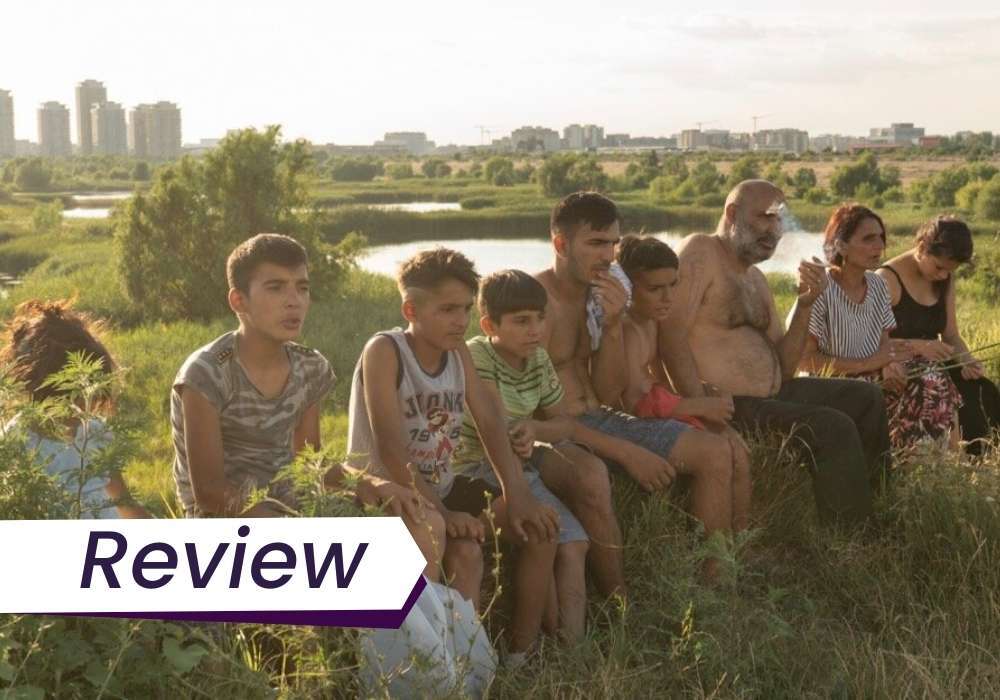Writer-director Fernanda Valadez and writer-producer Astrid Rondero discuss how the political climate in Mexico impacted Identifying Features.
Identifying Features is now available in virtual cinemas in the US and Canada.
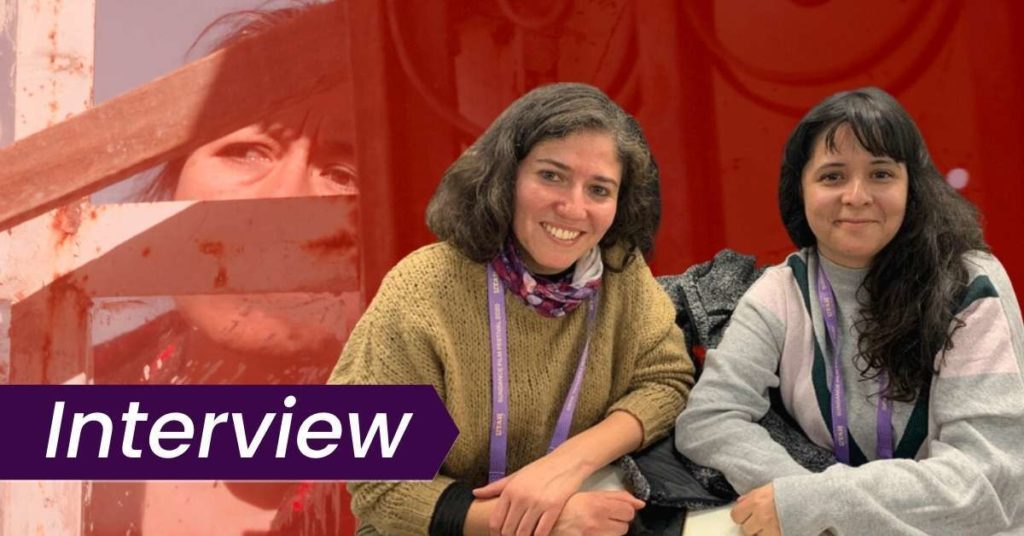
Discover one film you didn’t know you needed:
Not in the zeitgeist. Not pushed by streamers.
But still easy to find — and worth sitting with.
And a guide to help you do just that.
In the second scene of Identifying Features, the camera stays fixed on Magdalena (Mercedes Hernández) and her friend in a police station as they plead for information on the whereabouts of their missing sons. Both boys left home to cross the border from Mexico to the US, and neither of the women have heard from either since. We never see the face of the man Magdalena and her friend are talking to, who eventually relents and hands the women a binder of photos of corpses that were found near the border. After a few minutes of flipping through pages, Magdalena’s friend breaks down when she recognises her son’s body; Magdalena is left sitting there, stunned, still unsure of what happened to her son or if she’ll ever find out.
This is just one of several scenes in which writer-director Fernanda Valadez limits what we can see, focusing solely on Magdalena’s face, which gives her importance in the frame even in scenes where authority figures treat her as unimportant. She travels to the border, determined to find her son, but wherever she turns, she’s met with silence and people who see her as just another desperate person chasing a dead end. Along the way, she meets Miguel (David Illescas), a young migrant worker who was recently deported from the US back to Mexico, and who becomes a sort of son figure to Magdalena.
Valadez developed Identifying Features in a close creative collaboration with Astrid Rondero, who produced, co-wrote, and co-edited the film. The two have been collaborators since film school; both are directors, and they produce each other’s films. I spoke with them over Zoom about the horrifying true stories that inspired Identifying Features, how they incorporated documentary elements into the shoot, and how their collaboration operates.
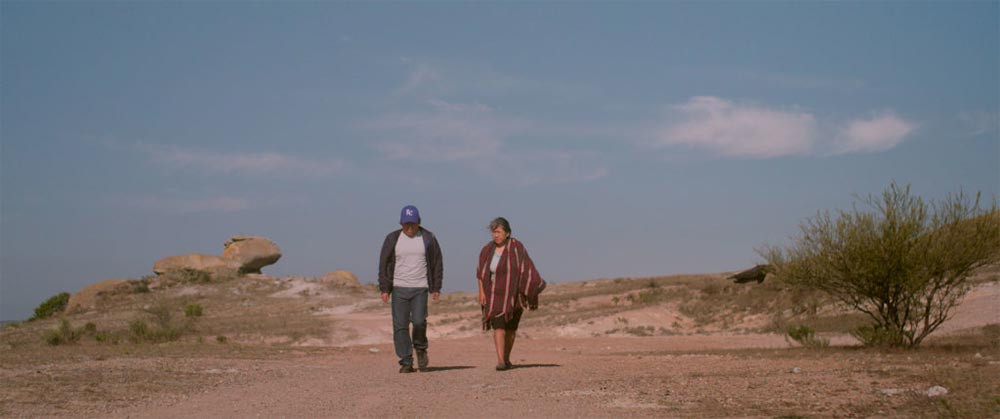
Seventh Row (7R): What was the genesis of Identifying Features?
Fernanda Valadez: We shot a short film in 2013 [called 400 Maletas], so I already had the idea of a mother looking for her son, as well as the deported young man going back to Mexico. We had been researching a lot, and we had a lot of information. After the short film, I wasn’t satisfied with the result. You can’t put everything you want in twenty minutes. At that time, I was too shy to approach the characters.
We almost began from scratch [for the feature], rewriting the script together. We tried to give the story the sense of a broader humanitarian crisis, and a violence that was crossing social classes and wasn’t just located in the rural communities of Mexico.
7R: What kind of research went into the script?
Astrid Rondero: We read a lot of works by different researchers and journalists. That was the base for the film. We had contacts with human rights organisations who work with a lot of families of victims, so we discussed if [focusing on one of those individual stories] was the way we should go. We decided not to, because we didn’t want to feel like we were using a specific case.
We started working with journalists in Mexico who themselves are victims of violence. It’s one of the most dangerous places in the world to be a journalist. That gave us the freedom to use different pieces of the tragedy we’re living here to give a broader view of the humanitarian crisis that we are living.
7R: Could you tell me a bit about your creative collaboration? On a practical level, how do you approach devising and writing a script together?
Fernanda Valadez: I think we are very free. I wrote a version of the script, Astrid wrote another, then we read it out loud and write in the moment. It depends what we think the script needs. We write alone and together. If there’s a particular scene that I thought I wasn’t getting, I’ll give it to Astrid.
Astrid Rondero: In this case, it really evolved as we were writing. A lot of things were happening in Mexico, so it was very difficult for us to not take pieces of those [real stories]. That made the writing process very long, but also very free. In Mexico, reality surpasses fiction.
7R: What does your collaboration look like when it comes to actually shooting the film? To what extent do you work together when making creative choices on set?
Astrid Rondero: When you’re working with a producer that is so close to the material, you’re always thinking about how to tackle certain aspects that are really related to the budget.
I think a lot about that scene with the truck and the corpses. In the script, it was written as a regular morgue. When we were starting the pre-production part of the film, it was impossible to hire one of those places. At the same time, there was terrible news in Guadalajara, a big city here in Mexico, where they discovered a refrigerator truck packed with corpses that was there for a long period of time, and it began to smell really terrible. People around called the police thinking it was the drug cartels hiding corpses there, and they realised, with horror, that it was the government itself that didn’t have space to put the bodies of victims of crimes. That news helped us to, at that point when I was producing, [to decide to] write the scene in this other way. When you’re working as a creative producer, it helps a lot.
Fernanda Valadez: It really made us a creative team. Even though I’m the director and Astrid’s the producer, and we’re co-writers, the film really belongs to both of us in terms of authorship.
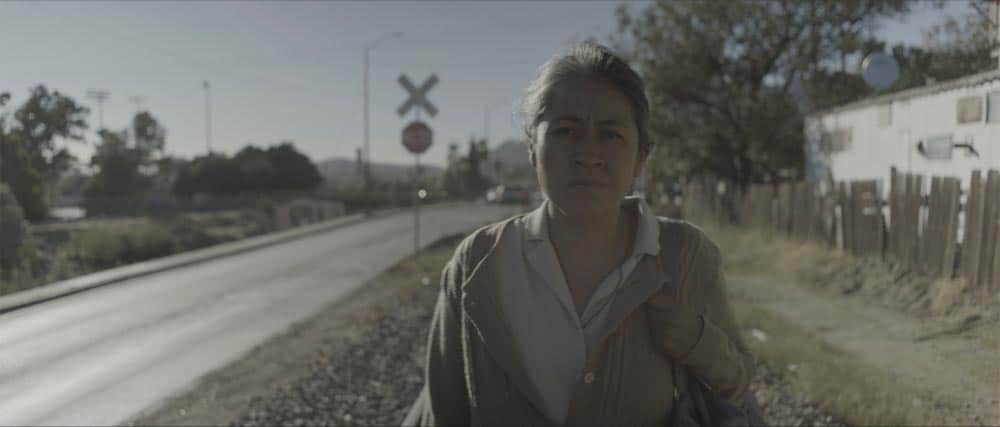
7R: How did you collaborate with Mercedes Hernández to craft the character of Magdalena?
Fernanda Valadez: She was also the actress in the short film, so the work we did then really helped us to have the ground to begin to do something different [with the feature]. She’s also a very politically and socially active person, so she was constantly researching the mothers of missing people. She had some conversations [with real people in that situation].
I tried to work differently from what we did in the short film. In the feature, we were working with a lot of non-professional actors. I tried to work with less words, less concepts, and less intellectual work. It was more about finding motivations [for each scene] to create emotional atmospheres.
She [Hernández] didn’t know much more than the non-professional actors. They could be in the same universe. That might have been a bit frustrating for her, because I think actors like having conversations with directors and creating the character from that intellectual perspective, but I was convinced that this was the way. I think when she saw the film, she appreciated the result.
7R: How did you collaborate with cinematographer Claudia Becerril Bulos to devise the film’s aesthetic?
Fernanda Valadez: She’s just an incredible person to work with, very easy going and generous. I think she has the best of two worlds, because she has a lot of experience shooting documentaries. She’s very agile and in the moment. She helped the scenes evolve when we were shooting in documentary situations, like in the shelter for migrants. We were very playful. Because our project was very tight [on time and budget], we’d just do crazy stuff like, we only have candles, or the light of the fire, so what can we do?
7R: You said you were shooting in some documentary situations. Were you using real people and places?
Astrid Rondero: Yeah, for instance, the scene of the crossing was completely documentary style: Fernanda, the DP Claudia, and the actor [David Illescas], on the other side of the border. They had all the permits and letters saying [what they were doing].
Another thing about Claudia is she doesn’t think that the result [of an image] is linked to the equipment you use. She’s open to use any camera and make the best of it. That helped us a lot, especially in those kinds of situations.
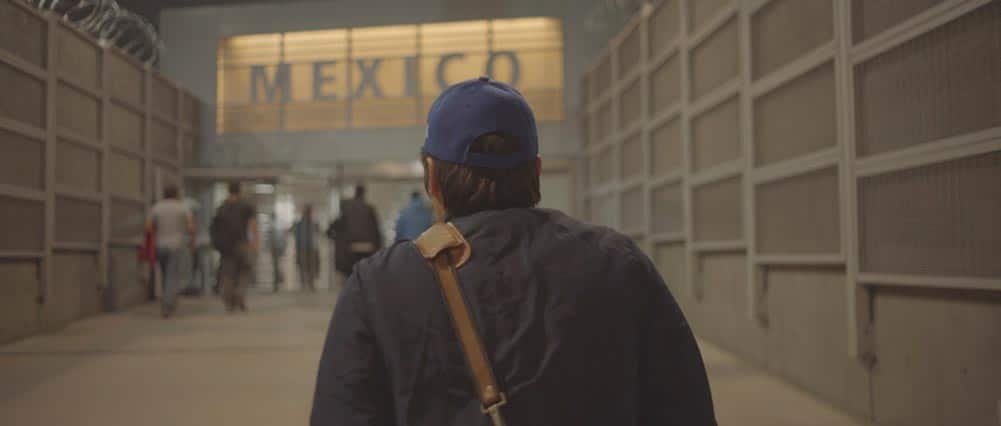
7R: The film is full of these gorgeous, kind of iconic images, even though what they’re conveying is really horrific. How did you think about how to visually portray violence and trauma?
Fernanda Valadez: That was a discussion we had from an early draft of the script. We were wondering where to let the audience know about the violence. We decided to give the audience partial knowledge of the violence that was going on, so we could feel the experience of this mother making a journey into the unknown. That decision was kind of like a beacon light.
At some point, I was going astray, showing too many details of violence in some scenes. When I made one rewrite, it almost became pornographic. One of Astrid’s brilliant ideas was to use visual metaphors for evil. [For example, in one scene, instead of seeing graphic details of murder, we see the silhouette of a devil set against the light of a campfire.] We could experience terror but not make use of the gory details of the violent event.
Astrid Rondero: Which takes away the humanity of the experience. [When you see graphic violence,] it becomes so shocking that you feel it’s not so human anymore. In Mexico, the violence is very graphic.
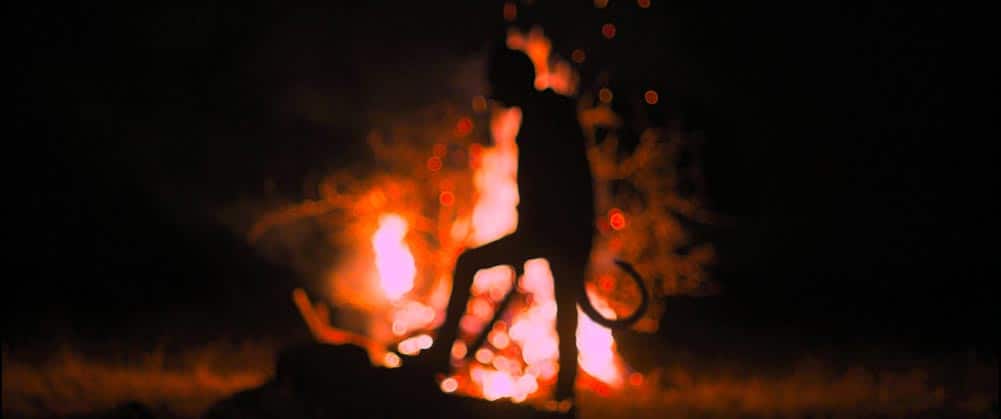
7R: Partway through, the film reveals itself to have two main characters, as we briefly switch perspectives to follow Miguel. Why did you choose to follow two characters together, rather than just staying with Magdalena?
Astrid Rondero: That was something that Fernanda had decided from the very beginning. She wanted to do a mirror of the son with this other man that returns years after. In our previous film, we also had that same idea.
We like to explore how the people we love somehow transform into the people you later know. The short film before felt too small, like we were telling just that story. With the feature, we wanted to tell how the situation in Mexico is touching all layers of society.
7R: I understand that the two of you co-edited the film along with another editor, Susan Korda. What does that collaboration look like?
Fernanda Valadez: I have to say, I’m not a good editor.
Astrid Rondero: [Laughs, shakes head]
Fernanda Valadez: I cut the first two cuts, then Astrid jumped in. Astrid is a much better editor than I am.
Astrid Rondero: I’ve edited more films than Fernanda, that’s it. The good thing is she had more freedom of time to edit. When she had a second cut, I jumped in and fixed the middle part and the ending. At some point, when you’re editing, you just get stuck, which is why it’s good to edit in pairs or a trio.
Susan Korda is an editor herself and our mentor. We met her at the Berlinale Talents years ago. She’s edited everything we’ve directed. Susan knows us so well that she knows how to find a balance between my speed and her [Fernanda’s] speed. Fernanda’s first cut was too long. Susan found a negotiation between my time and her time, and in doing that, she found the right rhythm for the film.
7R: How did you approach the sound design in Identifying Features?
Fernanda Valadez: We both enjoy thinking about sound. I learned from Astrid, when we were students, how to write a script thinking about sound. The orthodox format is more for images. There’s no format for sound like there is for dialogue. So when I read her scripts, as a student, I realised it was so important, because then you could think about what you were seeing and listening to. You don’t necessarily hear what you are seeing.
We were thinking about sound when we were writing. Because we had decided to be very partial about what was in front of the camera, what you hear became important. It was giving you more dramatic information. When the sound designer jumped in on the conversation and many of the scenes really grew from his input. Some of the most important scenes changed.
7R: In what ways did sound change some of the scenes?
Fernanda Valadez: For example, at the end, when Magdalena and Miguel run out of the house and hide in the brush. We didn’t write [in the script] how they would communicate. [The sound designer] had the idea of using whistling. They recorded that and showed it to us.
Astrid Rondero: That scene completely grew after that.
7R: What are you working on next?
Astrid Rondero: We’re in financing for our next feature. I’m going to be the one directing, but it’s a script we wrote together. It’s about an orphan from the cartels. It’s like a coming-of-age film, but instead of him turning into a criminal, he turns into something very different. It’s a little brighter than what we’ve done before.
Fernanda Valadez: We are doing interviews in Mexico as well as the US, and in an interview, a journalist asked Astrid about this coming feature. We told her the synopsis and he said, “Well, that’s science fiction.” We want to be hopeful and not to think that the destiny of this generation has to be violence.
Watch Identifying Features in virtual cinemas in Canada and the US.
You could be missing out on opportunities to watch great films like Identifying Features at virtual cinemas, VOD, and festivals.
Subscribe to the Seventh Row newsletter to stay in the know.
Subscribers to our newsletter get an email every Friday which details great new streaming options in Canada, the US, and the UK.
Click here to subscribe to the Seventh Row newsletter.
